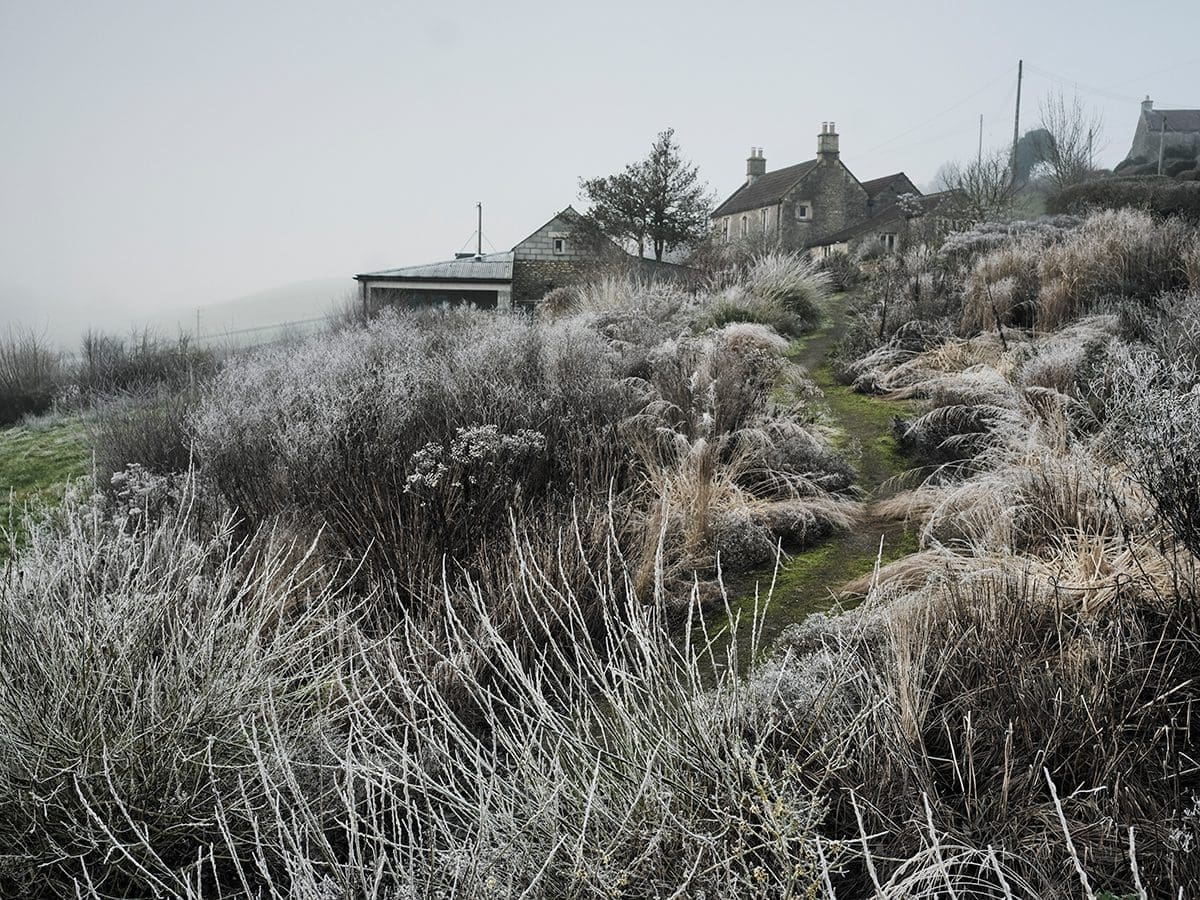
Last December, just days after Christmas, we received an email from Clare Foster, gardens editor at House & Garden magazine. She wanted to know if we would be happy for the garden at Hillside to be photographed by Andrew Montgomery for a new self-published book they were working on together. The focus of the book was to be gardens in winter and they had set themselves the task of getting it written, photographed, designed and published within 10 months.
On a perfect misty morning in early January with the garden covered in hoar frost Andrew arrived just before sunrise. He immediately got to work with total focus and proceeded to work into the early afternoon when the mist finally dissipated and his frost-bitten fingers could take the cold no more. The book has now been published and features gardens by Arabella Lennox-Boyd, Arne Maynard, Jinny Blom, Piet Oudolf and Tom Stuart-Smith amongst many others. Here Clare and Andrew tell us about how the book came about and what they feel is particular and special about the garden in winter.
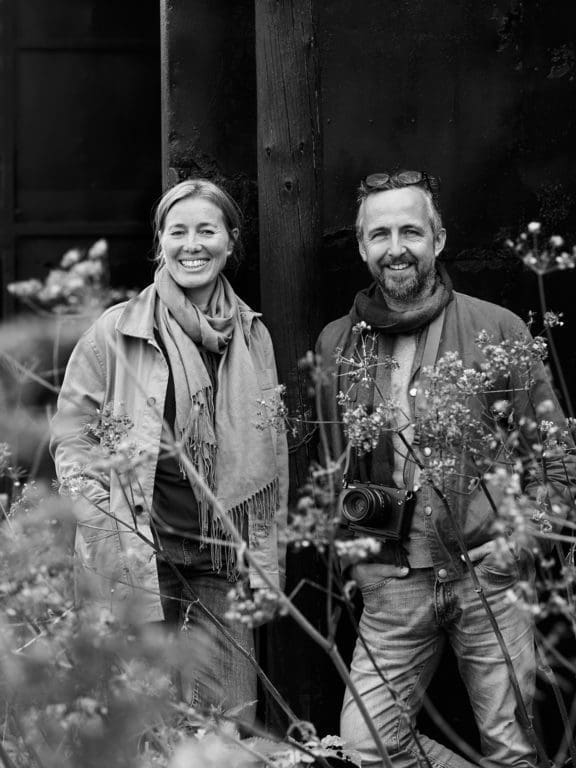
Tell me how the idea for the book came about? What inspired you to create a book about winter gardens?
Clare: Andrew and I had worked on a couple of winter garden features for House & Garden and one in particular we had been trying to capture for a couple of years, waiting for the right moment. In lockdown, Andrew started photographing seed heads and ruminating on the idea of doing a book. I seized on the idea and came up with a list of other gardens which I thought captured the beauty of winter in very different ways. We were lucky – the weather was reasonably cold last winter – and we managed to get most of them photographed in atmospheric frost, mist or snow.
Andrew: Winter Gardens came about in December 2020, during the second lock-down. Having seen all my photography commissions put on hold until well into 2021, I had this free time all of a sudden where I could do what I wanted, so decided to photograph and put together my own book. Having spent the previous 10 months, including the first lockdown, putting together a book for Petersham Nurseries which was a self-published project, I knew I could do it. Winter Gardens was the perfect subject. Covid secure, I could shoot whenever I wanted with no human contact. More importantly it appealed to my own personal desire to see gardens in a new way. Stripped of colour, a monochromatic palette where light and shadow became paramount. The gardens became a muse for my love of black and white photography. Mist, snow, frost all enhanced the medium, which I felt had never really been properly explored in garden photography.
Gardens are often referred to as out of season in the winter. Can you tell us why you felt differently?
Clare: When you slow yourself down and really start looking at the garden and landscape in winter you notice the most amazing nuances. It is the sort of beauty that might not jump out at you, but once you adjust your eye it becomes a marvellous thing. There is no such thing as ‘out of season’ – winter is very much a season to be celebrated in the garden, with a chance to slow down and appreciate everything in suspended animation. And the other thing is, if you don’t have the quietness and downtime of winter you don’t appreciate the cycle of growth as it appears again in spring. It’s sort of magical, really.
Andrew: Out of season seems to suggest they have nothing to offer. I had a conversation with one of the gardeners at Great Dixter discussing frost. She remarked that the first frost was always the most magical, as if it signified the curtain call of Autumn, those brown warm shapes and tones suddenly enveloped by a crystal blue cloak, a portent of what is to follow. This sparked the need to witness and photograph this inaugural wintry pistol crack. So over previous winters I have always felt the need to try and capture this moment.
The winter season offers something different to capture, something much more subtle. The garden is dormant, quiet, its bones and earth bereft of colour, where weather dominates the mood and feel of the space, enhancing what is left for us to see. It also gives us a chance to really reflect on what went before, but also gives us hope as to what is to come. Winter is the season of reflection.
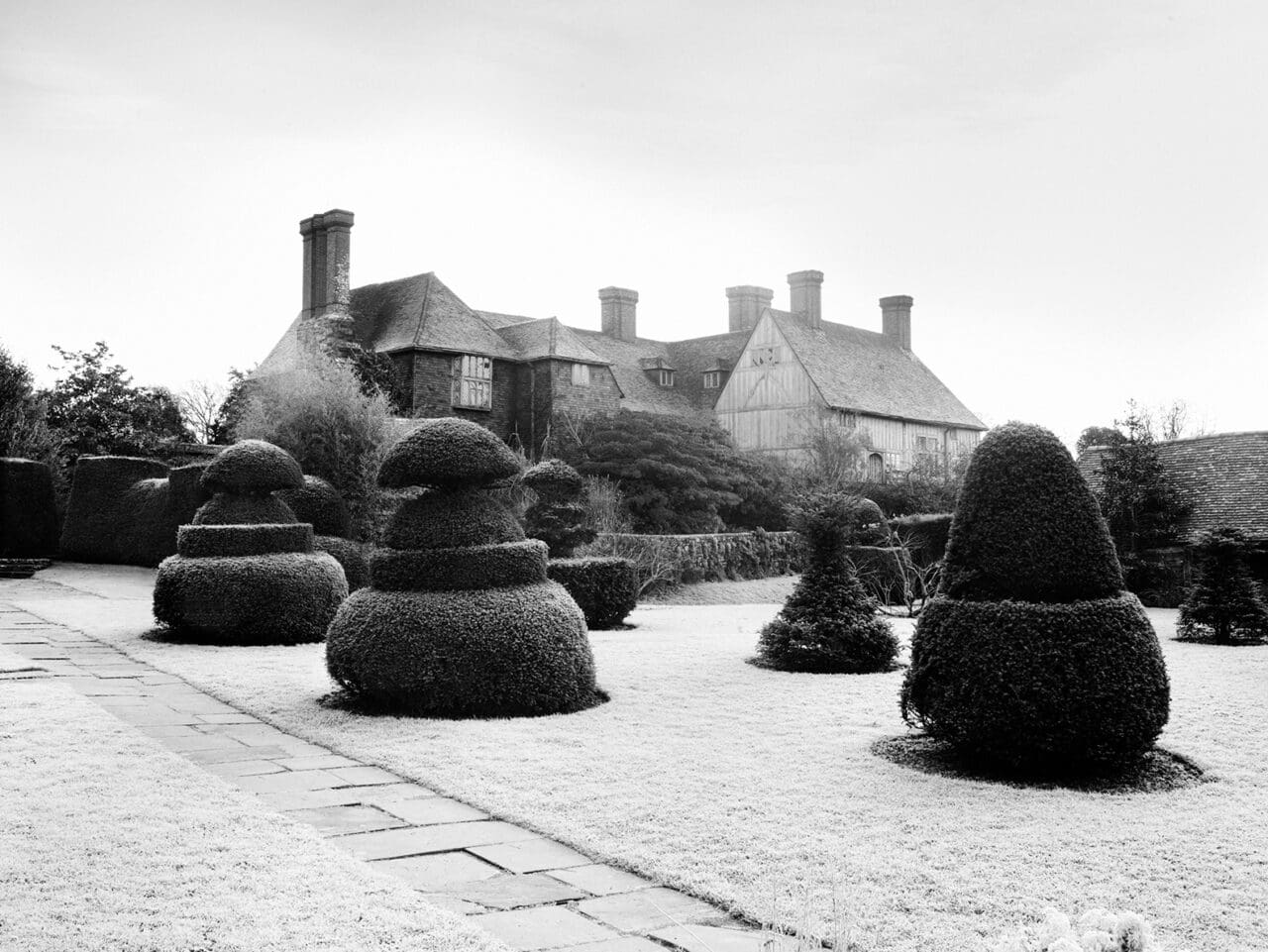
How did you go about selecting the gardens you chose for the book? What was the story you were wanting to tell?
Clare: We wanted there to be some very contrasting gardens in the book to show that there are different ways to bring beauty and interest into the winter garden. The book is divided into three sections that take you conceptually through early, mid and late winter, to show that winter is not a static season at all, but has its own momentum towards spring. Three essays group the gardens into different types: Beauty in Decay features gardens with grasses and seedheads; Silhouette and Structure looks at gardens with a stronger topiary framework; and A Shy Flowering contains gardens with winter or earliest spring flowers. The last garden in the book shows everything cut neatly down and mulched ready for spring. One senses the hope of the new year.
Is there anything you learned about the process of gardening while researching, writing and producing the book that was either new to you or came as a surprise?
Clare: I learned to really, really look at the process of senescence in my own garden. In certain plants, the seed heads and stems collapse quickly; others are incredibly strong and last for months and months before you have to fell them in March. I noticed what rain or frost did to my honesty seed heads and this close observation brought so much pleasure. I also learned quite a lot about snowdrops from the head gardener at Lord Heseltine’s garden at Thenford. They have a collection of about 900 varieties and she knows almost everything there is to know about propagating them.
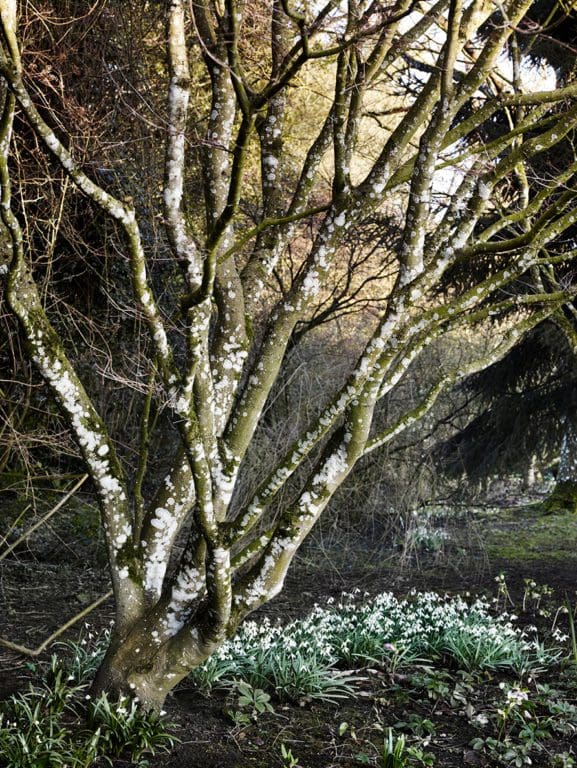
Can you tell us about some of the challenges you face photographing gardens in winter?
Andrew: The challenges – well the obvious one is the cold. It’s debilitating both to people and battery life! Fingers become useless after prolonged exposure to the cold, disconnected from the brain you begin to fumble the camera controls, struggling to operate something which usually you do without looking. The cold becomes tiring, tripods and ladders too cold to touch with bare hands. Gloves, thermals and merino wool layers help massively. Cameras also don’t like the cold, and you have to acclimatise them slowly to the conditions, otherwise condensation builds up on lenses and viewfinders.
There’s also always a chance in the winter that you’re not going to be able to get to the garden you’re supposed to be photographing due to ice or heavy snowfall. Either that or, having headed off at dawn into the frost and snow, you find that by the time you get there it’s disappeared! One of the gardens was a particular challenge and it took four attempts to get the pictures that appear in the book. The garden is just off the M4 not far from London, not an area known for snow. The fourth attempt was only successful as I was supposed to be going down to Dorset to do a shoot that morning, but couldn’t get there as the A303 was snowbound. So I took a gamble on the fact that it was probably snowing at this other garden, which was much closer. This was at 5 a.m. so I just decided to turn up and hope the owners didn’t mind! Of course, I was incredibly lucky and got some beautiful shots of the garden in the snow.
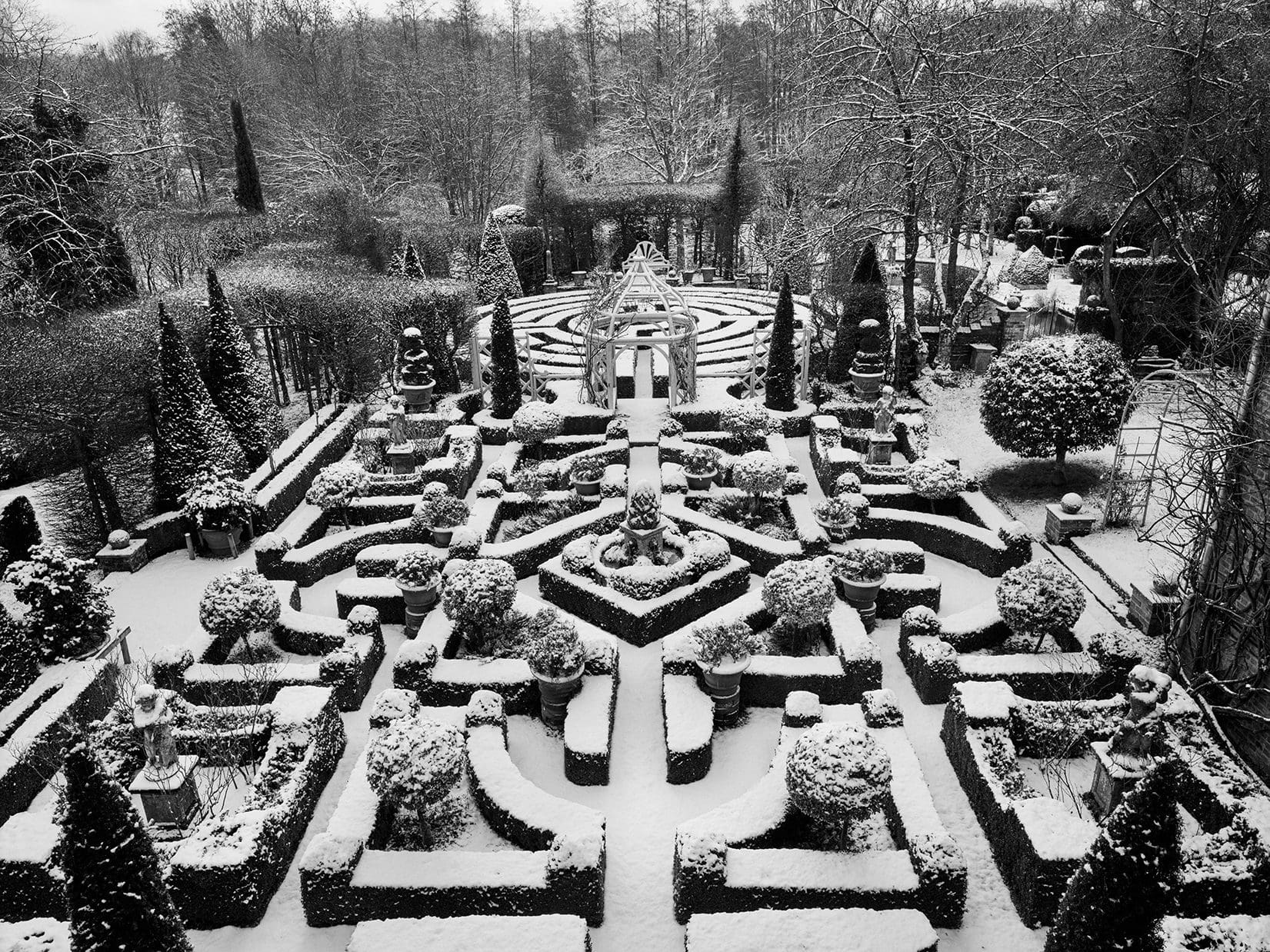
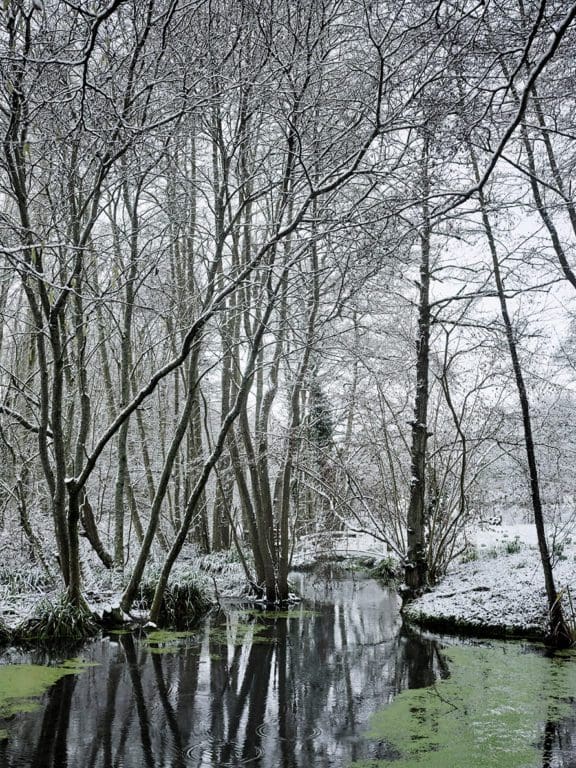
The book is beautifully thought through, laid out and paced. Who designed it for you?
Andrew: I designed and laid out the whole book and the individual gardens and chapters. Editing is a process which I love. Pacing the run of photographs for each garden, juxtaposing images, mixing colour and black and white. It’s just like planning and planting a garden – extremely creative. You are mindful of what comes before and next, not wanting to repeat yourself visually. Always trying to make each image earn its right to be on that page and in the book.
Once I had everything laid out and the gardens organised into chapters, I would then work with a great guy called Anthony Hodgson who was able to put everything into Indesign for me and put the book together for printing. He also handled all the typesetting and font choices in the book.
Andrew, at the book launch you said that the image you took at Hillside which you titled The View to the Tump, ‘is probably the most spiritual picture I have ever taken.’ I’d really like you to expand on that and tell me why.
Andrew: The View to the Tump is an image that had been one of my favourites throughout the book’s editing process. It was the best shot from my day’s shoot at Hillside, but it was when I saw it enlarged to over 3ft by 2ft on the table in the printers that its power really struck me. I became quite emotional seeing it for that first time at that scale. I had only ever viewed it on my computer screen at home where it was no bigger than A4 size. The scale of the print, which was to be hung with two other prints of Hillside for an exhibition to celebrate the book launch of Winter Gardens, had made it an immersive experience.
Once hung on the wall I began to see that the image was a glimpse of another world, familiar to ours yet somehow removed. The gate in the image took on the metaphor of the entry into that other world, as if this was a glimpse of heaven beyond.
Now for me to say these things about any image, let alone one of my own, is unheard of, but this one is different and stems from my emotional reaction to it. This is a rare, profound feeling that has happened only once or twice in all my thirty years of taking photographs, but it’s the spiritual connection that The View to the Tump has that makes it unlike anything I have taken before.
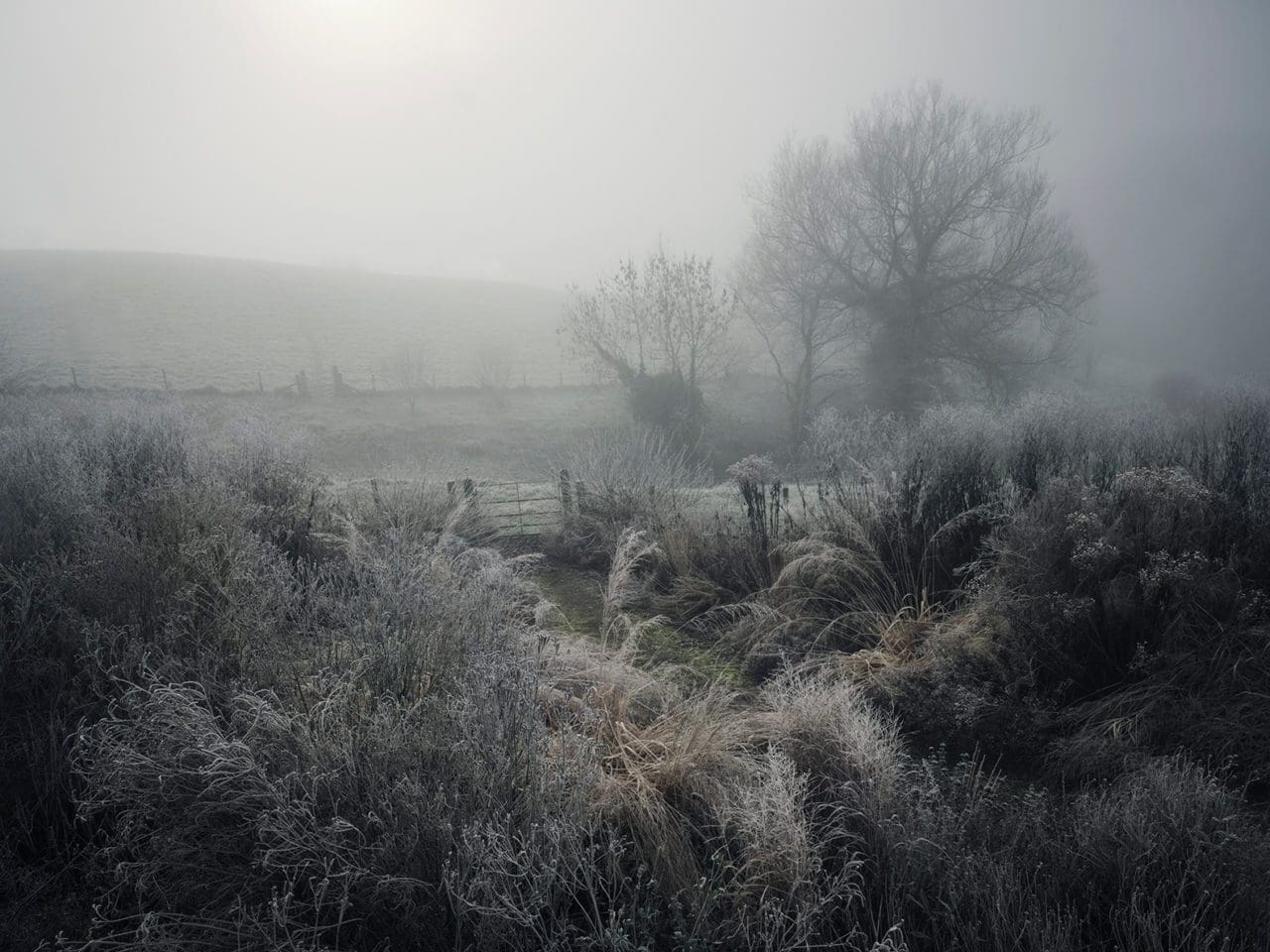
Can you tell me what it is you see in winter seedheads and skeletons, which your son, Clare, described as a ‘a load of depressing old sticks’?
Clare: Every seed head has a different structure, a unique design that is revealed slowly as the plant decays. Some of them are really sturdy and strong, others are delicate and ethereal, but they are all marvels of nature. I find that photographing them sometimes makes me focus more keenly on them, especially if I’m doing close up or macro shots that reveal the tiniest detail. I think this is something that you almost have to learn to do, and I will try and teach my 17 year old son to open his eyes to it. But I don’t think he’s ready yet….
You first contacted us about this book just after Christmas last year, since when you have written, photographed, edited, designed, proofed and published this completely on your own. Can you describe what it has it been like self-publishing a book from scratch in just under a year and what have been the particular challenges?
Clare: It has been a complete whirlwind. We are both incredibly hard workers. We get things done, but it has been a fantastic experience because we have had complete creative control. Obviously Andrew takes the photographs and it was his eye that brought the book together, but he was very open to my suggestions and ideas and together I think we have made something that represents both our creative souls. We have made something with integrity that I think we are both incredibly proud of.
Andrew: The timescale to produce a book of this scale would normally be 1-2 years, so to do it in 10 months would, to a normal publisher, be impossible. We had planned out our production schedule, image editing, design, writing, copy editing and proofing to meet our deadline of July 29th. Files would then be sent to the printers and our book scheduled to arrive mid-October for our November 4th publication deadline.
The challenge was doing this alongside our normal careers at the same time, which put a huge amount of pressure on both of us. We just knuckled down and worked all hours on it. We really wanted the book to be published this winter, not a year later, and it could not come out at any other time of year either.
The most stressful part was waiting for the ship carrying our books to arrive in Portsmouth. The pandemic had played havoc with shipping routes and schedules and watching the boat make its eight week voyage over a live-view feed on the internet with publication day looming was nerve-wracking. In the end I took delivery with just two days to spare!
Now that you have one book under your belts do you have any plans for another? If so, are you able to tell us anything about it?
Clare: Yes – another book is definitely in the pipeline. Another garden book. Watch this space!
Andrew: Well, it’s very exciting that we know what book two will be! It’s going to be another garden based book, but we can’t say more than that. We are aiming to release it sometime in 2023, but to enable us to do that book we are working as hard as we can now to make Winter Gardens the success we feel hopefully it deserves to be!
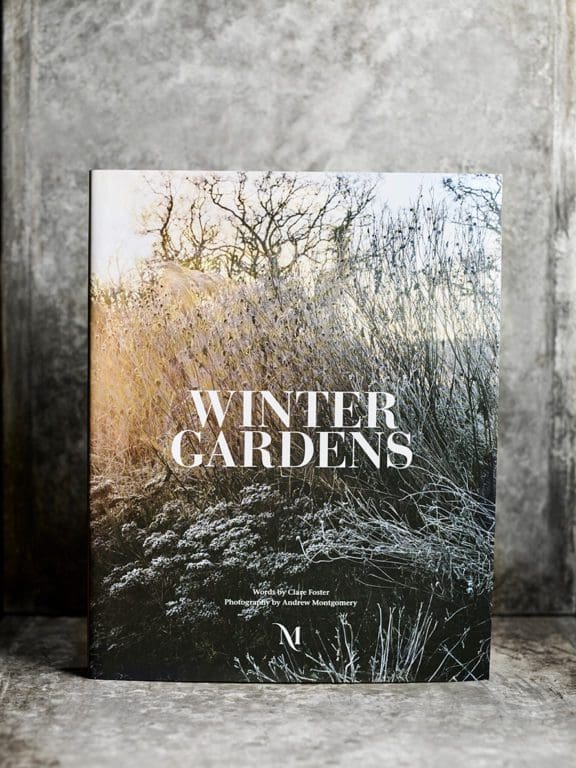
Winter Gardens costs £45 and is available to buy directly from Montgomery Press.
An exhibition of Andrew’s photographs from the book is being held in the old tithe barn at Thyme, Southrop, near Lechlade until April 4 2022.
Interview: Huw Morgan | All photographs © Andrew Montgomery
Published 4 December 2021
 Previous
Previous
 Next
Next
